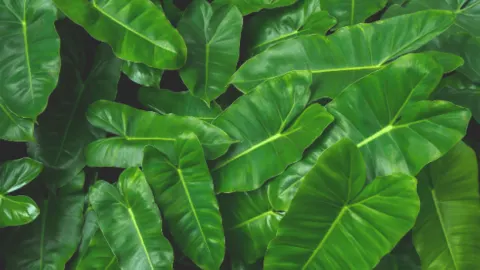The Philodendron Burle Marx’s care (Philodendron burle marxii) is like most other Philodendrons. They need well-draining soil and bright indirect light. And their soil should always be moist but never drenched.
This Philodendron, from the Araceae family, is a low-growing shrub. The leaves are heart-shaped but narrow.
Like most Philodendron plants, the leaves are also glossy and full of texture. But the stems are a fun red color.
Philodendrons have been popular houseplants for a very long time.
They’ve been popular at least as early as the Victorian era, according to the University of Vermont.
This is because these plants are so easy to grow and propagate, and they remove toxins from the air.
The Philodendron Burle Marx plant isn’t an exception. People love this Philodendron for its’ easy nature and small demeanor.
If you’re considering caring for one of these plants, you need to know how to care for them correctly.
So, I created this ultimate guide for the Philodendron Burle Marx plant.
Philodendron Burle Marx Care
To care for Philodendron Burle Marx, use a well-draining airy potting mix of 100% peat moss or a peat moss perlite mix. Provide bright indirect light and keep the soil slightly moist when watering. It grows best between 64-79°F (18-26°C). 60% or more humidity is best for the plant to thrive. Fertilize once a week using a liquid fertilizer during the growing season.
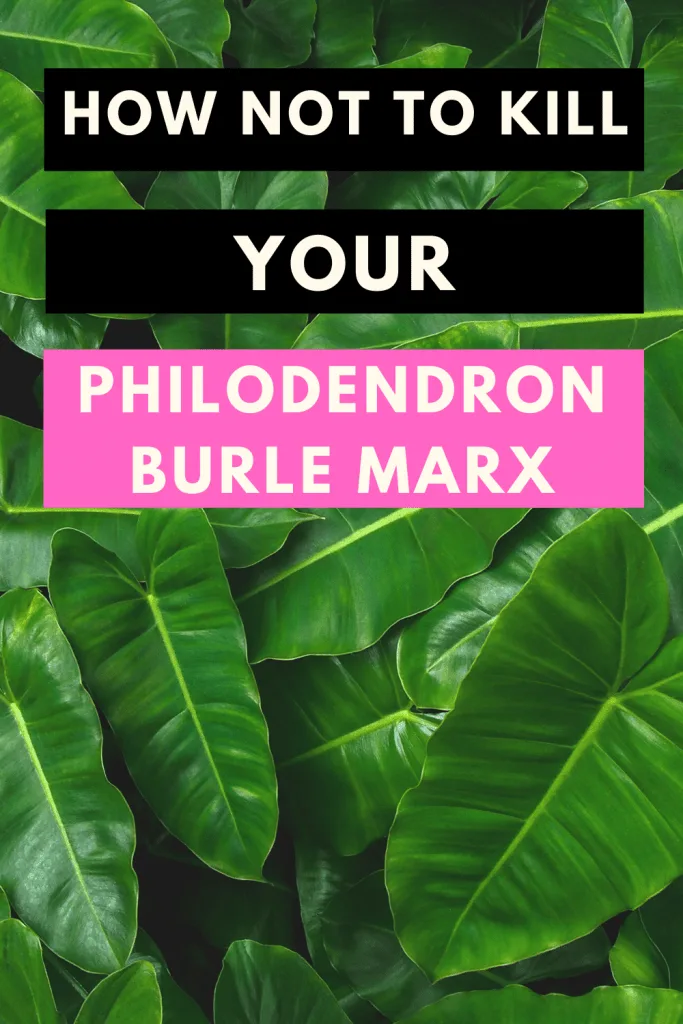
Table of Contents
Philodendron Burle Marx Plant Care Guide
Soil
The best soil for Philodendron Burle Marx is 100% peat moss or a mix of 200% peat and perlite.
For a Philodendron Burle Marx plant, you need well-draining soil. This type of soil ensures excess water drains through the plant pot.
This prevents all that extra water from building up in the soil. When there’s too much water in your plant’s soil, it blocks the oxygen from getting through to the roots.
The lack of oxygen to a plant’s roots can cause root rot. Root rot is just as the name sounds. It’s when the roots of a plant start to rot away.
The roots will turn a very dark brown or black. They’ll also get that rotting and mildewy smell.
When root rot spreads before it’s stopped, it will kill your Philodendron Burle Marx.
This is why it’s important to prevent root rot from starting, instead of trying to fix it later on.
But the soil for your Philodendron also needs to hold water for a steady amount of hydration. Your plant still needs water and moisture to thrive.
Your Philodendron Burle Marx plant doesn’t need organic soil.
But the plant will thank you later because it loves organic materials.
I usually use sphagnum peat moss for soil for lots of Philodendrons.
The peat moss has perfect aeration, so excess water isn’t going to stay if you over-water.
But the sphagnum peat moss still holds onto the water for your plant.
You can also use 100% peat-perlite. It works as well as the sphagnum peat moss.
Avoid clay and clay-like materials. They won’t hold the amount of water your Philodendron needs.
The pH of the soil should be between 5.6 pH and 6.5 pH. This means the soil should be either acidic or mildly acidic.
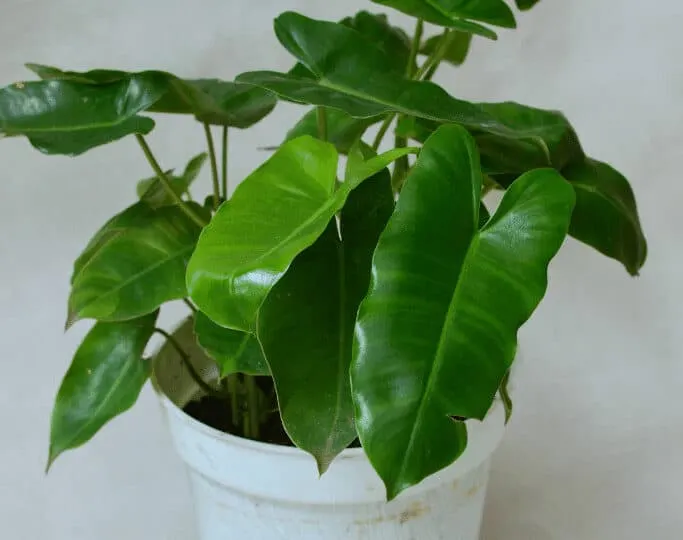
Light
A Philodendron Burle Marx needs bright but indirect light to thrive. It can live in low light but will not thrive the way you want it to.
If your plant receives direct sunlight, the light will burn your plant’s leaves. The light can burn right through them.
Direct sunlight can also cause black scorch marks on the leaves. At the very least, the sun will discolor the leaves and cause them to yellow.
You should set your Philodendron in either a north or east-facing window for indirect light.
This way, your plant is still getting bright enough light. But it’s not sitting right under sunlight.
Watering
Watering a Philodendron Burle Marx plant is much like watering most Philodendron plants. You want to keep the soil moist.
You don’t want to drench the soil in water, and you don’t want it to dry out.
Over-watering your Philodendron is as dangerous as under-watering it.
When you over-water, your plant is susceptible to different diseases. This includes the horrible root rot we discussed earlier.
But root rot isn’t the only horrible condition your plant can go through. The other conditions are only a little better regarding plant damage.
The only exception is during winter. When the cold months hit, let all the soil dry out before you water the Philodendron.
Temperature
The ideal temperature range for Philodendron Burle Marx is 64-79°F (18-26°C).
If the temperature drops below 60°F (16°C), it can slow the growth of your plant down. Your plant will stop growing if it drops below 50F (10°C).
Humidity
Philodendron Burle Marx needs a humidity of 60% and more to thrive.
The Philodendron Burle Marx plant is a tropical plant that originates from Brazil. So, the room your plant resides needs to mimic that tropical climate.
Humidity is important for your Philodendron to thrive. It needs that moisture in the air.
There are many easy ways to create humidity if your room isn’t cutting it.
The easiest way is to use a humidifier in the same room as your Philodendron Burle Marx. But humidifiers aren’t accessible to everyone.
The next method is to mist the plant leaves with water from a spray bottle. When the water evaporates, it creates moisture around your Philodendron.
The downside to this method is that unless you measure the humidity, you don’t know when you should spray again.
Our favorite method for creating humidity is the pebble tray method.
For this method, you need a tray, pebbles, and water. You fill the tray to the top with pebbles.
Then you pour water into the tray almost to the top. The water shouldn’t overtake the pebbles.
All you have to do now is sit the Philodendron Burle Marx’s pot on top of the pebbles. The plant pot shouldn’t be touching the water.
Like with the former method, when the water evaporates, it creates humidity in the air. That moisture goes right to your Philodendron.
The Philodendron Burle Marx plant can live in rooms with low humidity. They won’t thrive as well, but they’ll survive.
But they can’t live in areas with completely dry air.
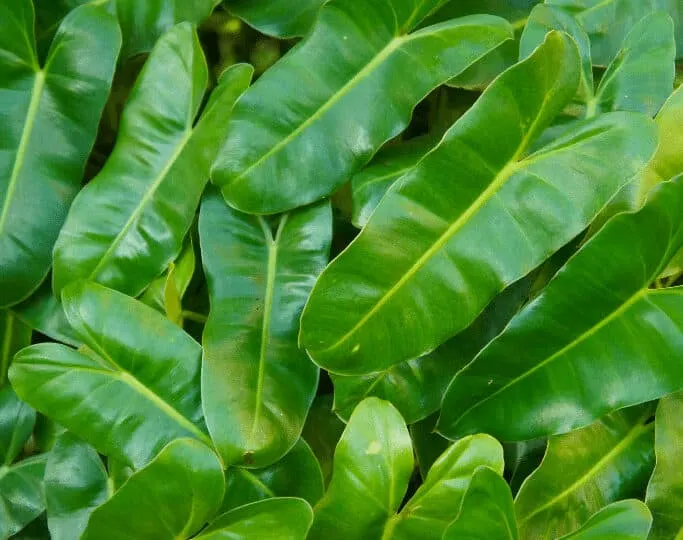
Fertilizer
Fertilize your Philodendron Burle Marx once a week during the growing season in spring and summer using a liquid fertilizer. Reduce to once a month in autumn and winter.
All Philodendrons are heavy feeders.
Regarding the Philodendron Burle Marx, a liquid or slow-release fertilizer works well.
You can also use all-purpose fertilizer. Make sure you use it at half-strength though.
No matter the type of fertilizer you use, you want a fertilizer that’s high in nitrogen. Nitrogen helps the leaves grow and glow.
When the cold months hit, you only need to fertilize the plant once a month.
Make sure you water your Philodendron Burle Marx before you fertilize it. The soil must be moist.
If the soil is dry, the fertilizer can damage your plant’s roots.
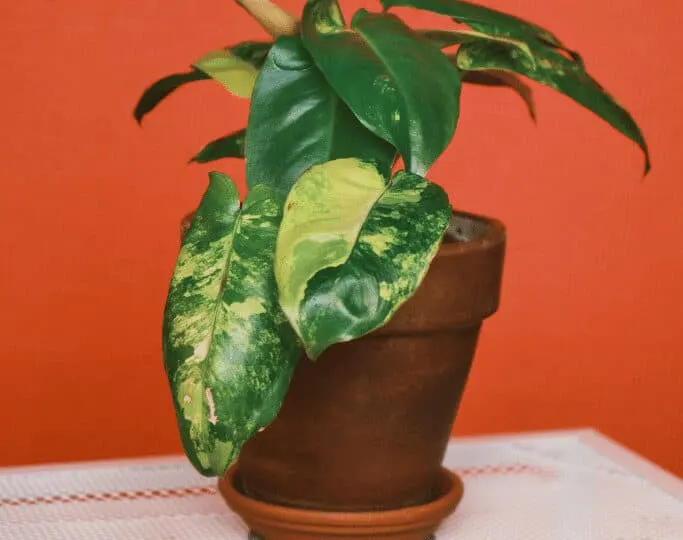
Propagation
When it comes to propagating a Philodendron Burle Marx, two main methods are used.
The first method is using stem cuttings and soil. The second method involves air layering.
We have both methods down below in detail to make your life easier.
Growth
The Philodendron Burle Marx grows to be only two feet tall. And it grows to be between two and four feet in width.
These plants don’t get very big.
Potting
You know it’s time to re-pot a Philodendron Burle Max plant when the roots start to compact and become a ball.
This means there’s not enough room for the roots to stretch out and grow.
You need to re-pot the Philodendron Burle Max before the growing season. This is so you can re-pot it before any new growth happens.
When you do go to re-pot this Philodendron plant, the new pot should only be a little bigger than the original. Two to three inches bigger is perfect.
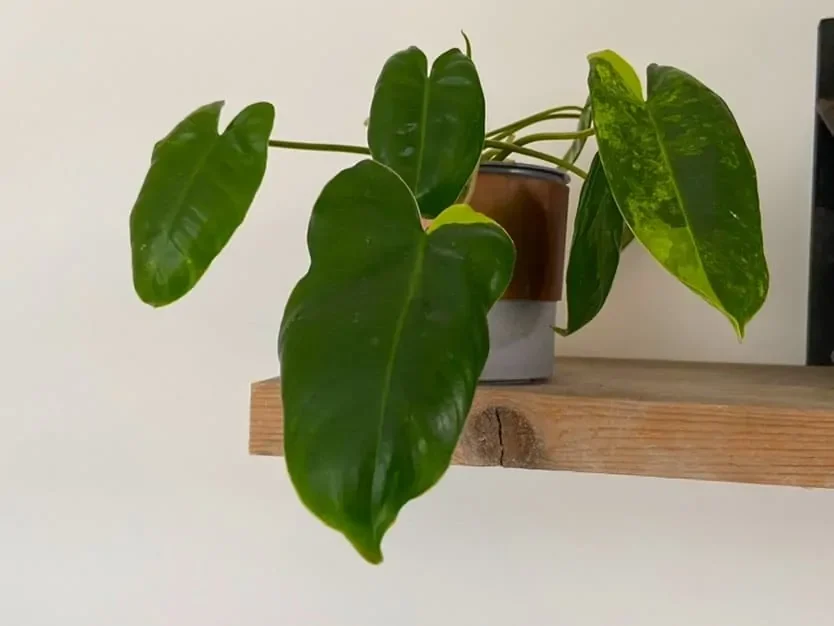
Philodendron Burle Marx Propagation Steps
Propagating a Philodendron Burle Marx is as easy as propagating other plants.
Plus, you have a couple of propagation methods to choose from.
If you’re a newbie, we suggest you stick to the simple method involving stem cuttings and soil.
But if you’ve done this method several times, you should try air layering.
Using Stem Cuttings
- You need a stem cutting for this method. So, your first step is cutting that stem from your Philodendron Burle Marx. But before you make that cut, you need to know what makes the perfect stem cutting. The cutting should be between two and four inches in length. And you should cut right below a leaf node. You need a pair of sterilized pruning shears for this task. You can use isopropyl alcohol to sterilize the shears. Now you’re ready to get your stem cutting.
- Your new stem cutting needs to cure now. To cure it, the cutting must sit in a warm room for seven to 10 days. During this time, one end of the cutting will callous over. A calloused end improves the chances of the cutting rooting when it’s planted.
- During the seven to 10 days of the curing, you should get prepared. This means you should prepare the plant pot and soil for your stem cutting. It’s easier to use sphagnum peat-moss as the soil, even for a cutting. The plant pot should have drainage holes.
- Once the week or so of curing is up, it’s time to plant your Philodendron stem cutting. Use your finger to make a hole that’s a few inches deep. Place the cutting in the hole and pack the soil around it.
- If your stem cutting doesn’t stand upright, try tying it to a straw. This should hold the cutting up.
- Place your stem cutting in a north-facing or east-facing window. Water and fertilize it like you do the mother plant. After a month or so, the stem cutting will take root.
Using Air Layering
- The first step to air layering a Philodendron Burle Marx is to wound the plant. For this task, you need a sterilized and sharp knife. You can sterilize the knife with isopropyl alcohol. Once your sterilized knife is ready, cut a wound into the plant’s stem. The wound should be about two inches in length and two inches deep.
- Once you make your cut, take a toothpick and push it through the wound. Position it, so it keeps the wound from closing. You need it open and accessible.
- Take a handful of sphagnum peat moss and moisten it. Now rub the peat moss all around the wound and the stem. Since you moistened it, the peat moss should stick much easier.
- Take a string and tie it around the stem and the sphagnum peat moss. This will help hold it on the wound. You can skip this step if the peat-moss stays stuck to the wound.
- Wrap plastic wrap around the wound and the stem of your plant. Make sure you wrap the plastic wrap tightly. You can use duct tape if it doesn’t stay on its own.
- While waiting for the roots to grow, prepare a plant pot and soil for your new plant. Use well-draining soil and ensure the plant pot has drainage holes at the bottom.
- You’ll notice roots growing from the sphagnum peat moss and wound in about three weeks. When the roots are about three inches long, you can remove your new plant from the mother plant. Cut right above and right below the peat moss.
- Now you can remove the plastic wrap. Be very careful not to injure the new roots.
- Time to plant your new Philodendron Burle Marx. The roots should be under the soil so they can expand.
- Even though your new plant doesn’t look like the mother plant, you will treat it like it is. You can watch a beautiful plant grow from this fun propagating process.
Common Problems with the Philodendron Burle Marx
Mostly, the Philodendron Burle Marx doesn’t have to worry about plant pests. It’s a rare occurrence.
But occasionally, you might find that a few pests have found their way to your Philodendron.
Thrips are a common plant pest that infests Philodendron Burle Marx plants. They are tiny creatures that look like little threads all over your plant.
These bugs can fly, but their weak wings don’t make it very far. You might see them hover for a moment before they crash back down.
Thrips steal the sap from inside your Philodendron. They use their mouths to pierce through the outside of the plant to the sappy insides.
Then they suck the sap up like they’re sucking through a straw.
Since your plant relies on sap to carry nutrients, losing sap has consequences. These consequences can turn dire.
Of course, death is the worst outcome of a thrip infestation.
The mealybug is the next plant pest you might encounter in your Philodendron Burle Marx.
Mealybugs are awkward looking. They’re waxy bugs with a strange cotton-like material that wraps around them.
This cotton-like material protects them from harm since they’re soft-bodied bugs.
To detect infestations, you’ll see cotton scattered on your plant’s leaves.
Mealybugs reproduce fast. And the bigger an infestation gets, the worse off your Philodendron is going to be.
Like most other plant pests, the insects suck the sap from your plant. So, when an infestation is large, there’s a large number of mouths feeding on the plant.
Stealing the sap from your plant is stealing all the nutrients and hydration the roots pick up.
There are several cheap and safe ways to get rid of plant pests.
For thrips and mealybugs, try neem oil out before anything else.
Tips for an Unhappy Philodendron Burle Marx
Want to keep your Philodendron Burle Marx plant happy? The proper care will do wonders.
But you’re not Superman. You can’t avoid every pest or issue that might come up.
But you can fix these situations correctly to get your Philodendron back into perfect health.
Your Philodendron Burle Marx Has Brown Leaves
When a Philodendron Burle Marx plant has brown leaves, there could be several causes.
Some of these causes include overwatering and your plant not getting enough humidity.
But your Philodendron is great at adapting to low humidity. You can rule this cause out.
And if you check the soil and it’s not drenched, you might wonder what’s going on with your plant.
Another cause that isn’t discussed often is built-up salt in the soil.
Every time you fertilize your plant, you add salt to the soil. After many feedings, too much salt can take over the soil.
Built-up salt can make your Philodendron Burle Marx sick.
To get rid of salt in the soil, you only need to do a soil flush occasionally. Soil flushes are simple.
Turn on your faucet or hose. But you don’t want the water running at full speed. It needs to be running slowly.
Let the water run over all areas of your plant’s soil. The water pushes the salt out through the pot’s drainage holes.
Your Philodendron Burle Marx’s Leaves are Wilting
If your Philodendron Burle Marx’s leaves are wilting, you are underwatering the plant.
Under-watering your plant starves it from the hydration it needs to live. It also needs water to go through photosynthesis.
The consequences of underwatering your Philodendron are as overwatering it.
To be sure that under-watering is the issue, check the soil. If it’s dry past a few inches deep, the Philodendron Burle Marx doesn’t have enough moisture.
Water your Philodendron plant right away. Make sure to check the soil every few days.
Sometimes it helps to have a watering schedule for your plant.
Your Philodendron Burle Marx is Losing Leaves
A Philodendron Burle Marx that’s losing leaves is being overwatered. You need to check the soil before watering your plant the next time.
You should be able to check your soil’s moisture by sticking your finger into it. You want the soil moist, not drenched in water.
If the soil is so drenched that your plant will suffer for a while, change out the soil. You don’t want to leave the plant to sit in all that water.
Too much water in the soil blocks oxygen from getting to the roots of your Philodendron. This leads to root rot.
This will happen if you don’t change that saturated soil.
The best way to know when to water a Philodendron is to check by sticking your finger into the soil.
You should stick your finger to your knuckle about two inches deep. If those two inches are both dry, you can water the plant.
Otherwise, wait a few days and check the soil again.
Other Varieties of Philodendrons
Philodendrons are intriguing plants to grow and care for. And there are tons of types and varieties of these plants. You don’t have to stick to the Philodendron Burle Marx.
We want to share with you some of the coolest Philodendron plants.
Philodendron hederaceum
The Philodendron hederaceum is the easiest Philodendron to grow indoors. It’s low maintenance with green and yellow leaves.
Philodendron speciosum
The Philodendron speciosum is a rare plant. It has a white spadix. Unique pink spathes surround the white spadix.
Philodendron brasil
The Philodendron brasil is a vine-type Philodendron with beautiful variegated leaves. The leaves come in several colors.
Philodendron goeldii
We love, love, love the shape of the Philodendron goeldii. Once the leaves have grown in groups, they hang down. It makes them resemble little trees.
Philodendron x evansii
This Philodendron is a hybrid. Its’ leaves are large and lobed. You need plenty of room in your home if you want to care for one of these.
Philodendron x wilsonii
The Philodendron x wilsonii is another hybrid Philodendron plant. Like the Philodendron Burle Marx, it’s known for its large but skinny heart-shaped leaves.
Philodendron Burle Marx variegated
The Philodendron burle marx variegated is the variegated version of the green Burle Marx. It produces great variegated leaves with yellow and white variegation. It is probably the most affordable variegated plant there is.
The care for Philodendron Burle Marx variegated very similarly to its green cousin. Provide it with bright indirect light, a humidity of 60% or more, well-draining potting soil, and temperatures between 64-79°F (18-26°C).
The main difference to green plants is that variegated plants need more light. They have less chlorophyll in their leave to photosynthesize. So put your Philodendron Burle Marx variegated in a bright spot in an eastern- or western-facing window.
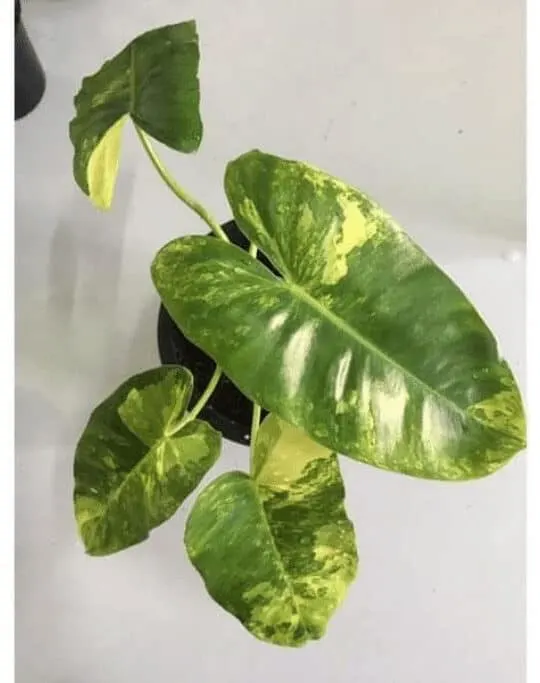
Frequently Asked Questions About Philodendron Burle Marx
Why is the Philodendron Burle Marx toxic?
The Philodendron Burle Marx’s leaves contain high amounts of calcium oxalate crystals. Calcium crystals can affect your entire body, including your immune system.
How can I prevent plant pests from infesting my Philodendron Burle Marx?
The way to prevent pest infestations in a Philodendron Burle Marx is by maintenance. Make sure you dust the leaves of your plant. Many plant pests are attracted to dusty, unclean plants.
Why are there weird water spots on my Philodendron Burle Marx?
Water spots on a Philodendron Burle Marx mean you’re watering the plant with hard water. You need soft water. It also helps to sit the water out overnight. This lets the chlorine and other added chemicals from the tap disappear.
Conclusion About Philodendron Burle Marx
Burle Marx plants are fascinating. Their skinny heart-shaped leaves are enough to entice you. Philodendron Burle Marx is easy to care for if you water it once a week and use well-draining soil. Fertilize once a week in spring and summer.

